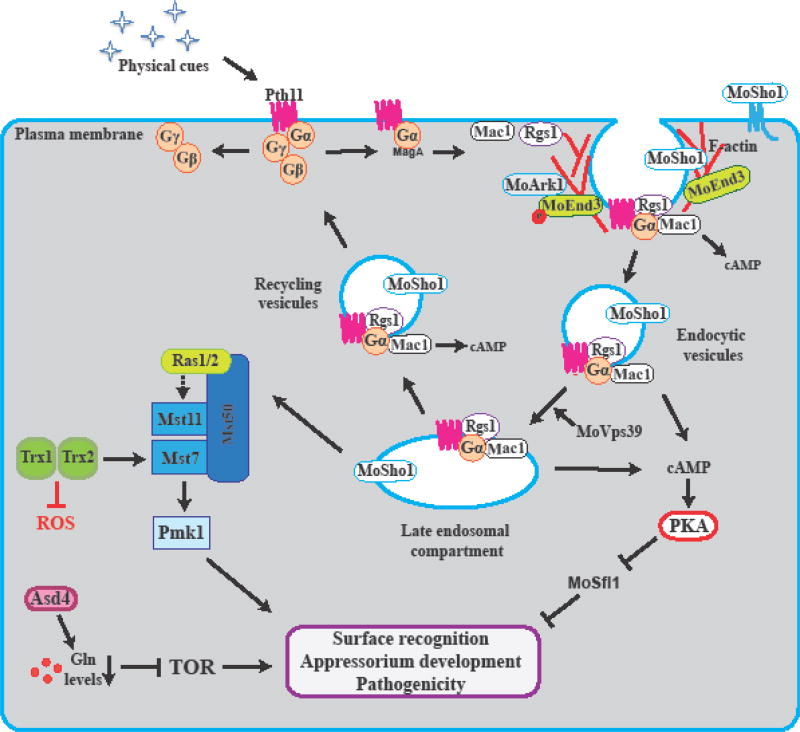Figure 2.
Schematic representation of the spatio-temporal cell dynamics of the G-protein/Pth11 and cAMP-signaling pathway during surface sensing and appressorium morphogenesis. Upon conidia germination, the key activators and regulators of G protein/cAMP (Pth11, membrane sensor MoSho1, G-proteins, Rgs1, and Mac1) are internalized to endosomal compartments leading to the accumulation of cAMP and subsequently PKA activity. MoEnd3 mediates the receptors Pth11 and MoSho1 endocytosis. MoArk1 negatively regulates MoEnd3 through protein phosphorylation. Mst50 interacts with Mst11/Mst7 and Ras1/2 proteins to activate the Pmk1 MAPK cascade and regulate appressorium development, penetration and pathogenicity. Asd4 acts downstream to cPKA, maintains intracellular glutamine levels in the cell, and promote appressorium formation. TOR signaling pathway inhibits the appressorium formation under conditions of high glutamine levels or in the presence of glucose. Diagram modified from [24

